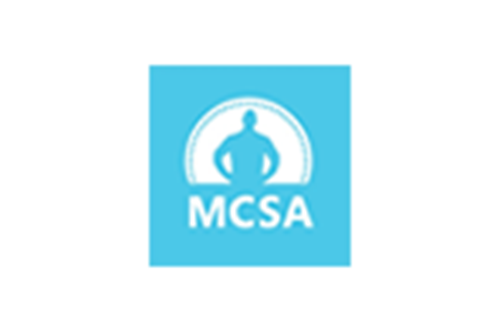AxiTrader is not a financial adviser and all services are provided on an execution only basis. Information is of a general nature only and does not consider your financial objectives, needs or personal circumstances. Important legal documents in relation to our products and services are available on our website. You should read and understand these documents before applying for any AxiTrader products or services and obtain independent professional advice as necessary. The DAX 40 is a stock market index made up of 40 of the largest companies listed on the Frankfurt Stock Exchange including Adidas, Volkswagen, and Siemens.
While stock trading speculates on the value of an individual stock, forex trading speculates on the value of a currency. Note that the forex market is highly liquid and available 24 hours a day except weekends as currencies trade across time zones. Stock index trading poses a lower risk than trading individual stocks due to diversification. If you trade a company stock and the company goes bankrupt, you can lose your investment. But if one company in an index rebalances regularly, the failing stock would be replaced by the next largest company outside the index. Stock indices weighted towards companies that generate most of their revenues abroad can be influenced by currency exchange rates.
Dow Jones Industrial Average (DJIA) (US)
Index trading can also pose a lower risk than foreign exchange (forex) trading. In the forex markets, traders speculate on currency pairs - aiming to profit from the rise or fall in the value of one currency against another with the risk of loss if the trade moves against them. The market cap of each company is calculated based on free float shares publicly available for trading.
Choose an index trading platform provided by your broker, and start trading indices. Take advantage of the platform's features and tools to analyze the market and make informed trading decisions. These indices serve as valuable tools for traders and investors, providing insight into the performance of specific markets or sectors. By monitoring the movements of popular stock market indices, traders can make informed decisions based on market trends and the overall health of the economy.
- You can hedge risk with index futures by taking a position that will turn to profit if one or more of your existing positions starts to lose money.
- This flexibility can increase your trading opportunities and potentially enhance your profitability.
- By carefully considering market hours, volumes, behavior, and volatility, traders can make informed trading decisions and increase their chances of success.
- It allows traders to bet on the overall direction of the stock market, simplifying the process compared to individual stock trading.
They're considered indicators of business confidence, performance and economic health. The Dow Jones Industrial Average (US30) in the US and Nikkei 225 are both price-weighted indices. Other major indices include the UK's FTSE 100 (UK100), Germany's DAX 40 (DE40), Hong Kong's Hang Seng (HK50) and Japan's Nikkei 225 (J225). Established in 1984, the FTSE 100 serves as a valuable indicator, providing insights into the health and vitality of the UK’s economy. The Dow Jones Industrial Average (DJIA), commonly referred to as the Dow, tracks the performance of the top 30 companies listed on the US stock exchanges. Its inception in 1885 is credited to the collaborative efforts of Charles Dow, Edward Jones, and Charles Bergstresser.
FTSE 100 Index (UK)
The ASX 200 index measures the performance of the largest 200 companies listed on the ASX by market capitalisation. The Financial Times Stock Exchange 100 index is a share index of the 100 highest market capitalisation companies on the London Stock Exchange. Tick values on indices are the minimum price fluctuations established by an exchange.
In reference to mortgages, it refers to a benchmark interest rate created by a third party. You can trade an index using futures or options contracts, exchange-traded fund (ETF) or contract for difference (CFDs). Once you have decided which underlying index you want to trade, you should adopt a well-defined trading strategy and open a position. Using technical and fundamental analysis tools will help you identify entry and exit points for your position.
Noteworthy, too, are instances where companies issue new classes of stocks, further influencing the index’s composition. The optimum time to trade is simply when the markets open in different time zones. Because index markets do not operate continually like the currency market, you must choose the optimal time to open a trade.
Select the index you want to trade
With this method, firms with higher share prices are given more weight, which means that changes in their values will have a bigger impact on the current value of the stock index they are a member of. An equal-weighted index calculates the average price of all stocks in the index, giving each stock equal weight. A volume-weighted index takes into https://www.fx770.net/ account the trading volume of each stock, giving more weight to stocks with higher trading volume. The S&P 500, also known as the Standard & Poor's 500 Index, is widely regarded as one of the most important benchmarks for the US stock market. It represents the performance of 500 of the largest publicly traded companies in the United States.
Types of indices
Indices, in essence, offer a snapshot of the price performance of a group of shares from a particular exchange. A classic example is the FTSE 100, which tracks the 100 largest companies on the London Stock Exchange (LSE). Trading indices brings the advantage of gaining exposure to an entire economy or sector in one fell swoop, streamlining your trading strategy by consolidating multiple assets into a single position. When it comes to investing in the stock market, there are several popular indices that traders and investors commonly reference.
How are indices calculated?
At expiry, you can settle the futures contract for cash, or roll it forward into the next period and continue to hold. Similarly, alternative trading instruments are indices meaning in trading, you can buy and sell baskets of spot assets. They combine individual assets into one group where their prices are measured and offered as an average value of the whole index. It's basically a portfolio of different assets that makes their prices more stable. Instead, you could place a single CFD short position on the Dow Jones 30 and profit from any potential downturn in the index.
For example, if you think the FTSE 100 will rise, you would open a long position. Your profit or loss is determined by the extent to which your forecast is correct. Indices trading means that you are taking a position on a stock index - which is measure of the performance of several different companies. Indices trading can be a way to get exposure to an entire sector or economy at once, without having to open positions on lots of different shares. Stops and limits are essential tools for managing your risk while trading indices. For example, if an investor buys an annuity indexed to the Dow Jones and it has a cap of 10%, its rate of return will be between 0 and 10%, depending on the annual changes to that index.
The share prices of all the constituents were totalled and divided by the number of companies. However, today some major indices such as the Nasdaq 100 (US100) and the Hang Seng are weighted averages. Exchange-traded funds (ETFs) are an increasingly popular way for investors to get started with stock indices trading. ETF fund managers, such as Vanguard, charge relatively lower fees, allowing investors to keep more of their returns. In trading, be it Forex, stocks, or any other market, there are individual assets that can be traded. Traders can use ETFs, mutual funds, and other forms of trading equally successfully (or unsuccessfully).






























 WhatsApp
WhatsApp